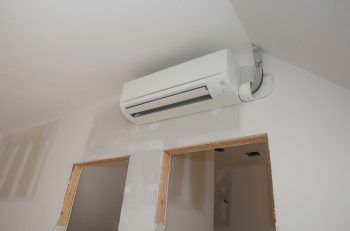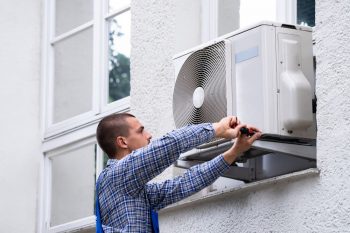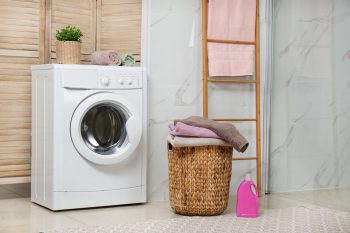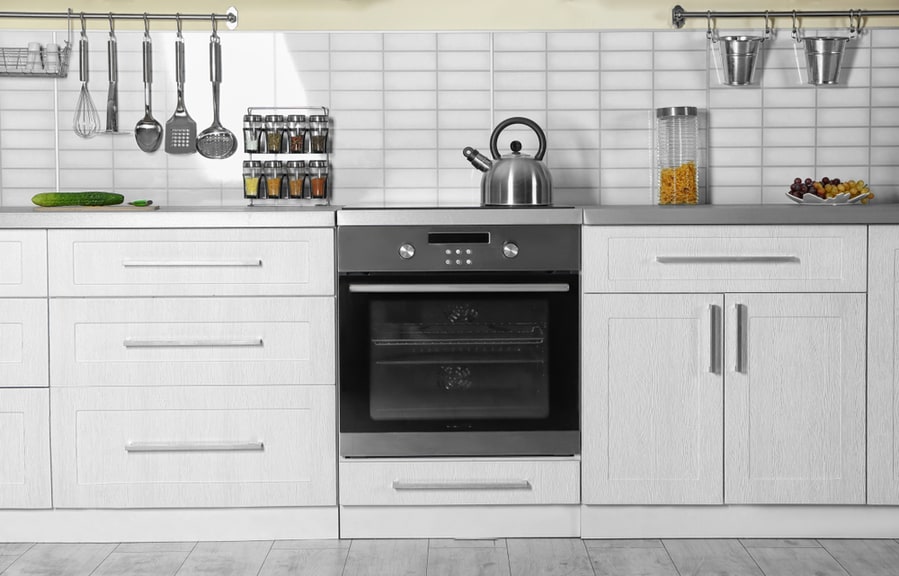
Built-in ovens are popular for kitchens because they fit seamlessly into the workspace and are often sold to match the rest of a set. The result is a beautiful, cohesive kitchen without waffling over design elements.
However, people make a couple of common mistakes when installing a built-in oven. One of these is failing to allow for ventilation.
Ovens (including built-in ones) need ventilation to prevent heat build-up around electronic components and reduce fire risk. While older or gas models require vents to the outside of the home, a modern electric built-in oven is much easier to ventilate.
When installing a new built-in oven, do the following:
- Allow at least 6 mm (1/4 an inch) of space between the oven and counter on either side.
- Consider a ventilated hood if someone in your household has a lung condition.
- Check to see if your model needs ventilation on the top of the oven.
Please continue reading for details about ventilating a built-in electric oven, why it is necessary, and options to consider.
3 Reasons To Ventilate Your Built-In Oven
A built-in oven isn’t going to spit gas fumes into your home if it isn’t vented, but there are other reasons to ventilate your oven.
1. Air Flow To Keep Electronics Cool
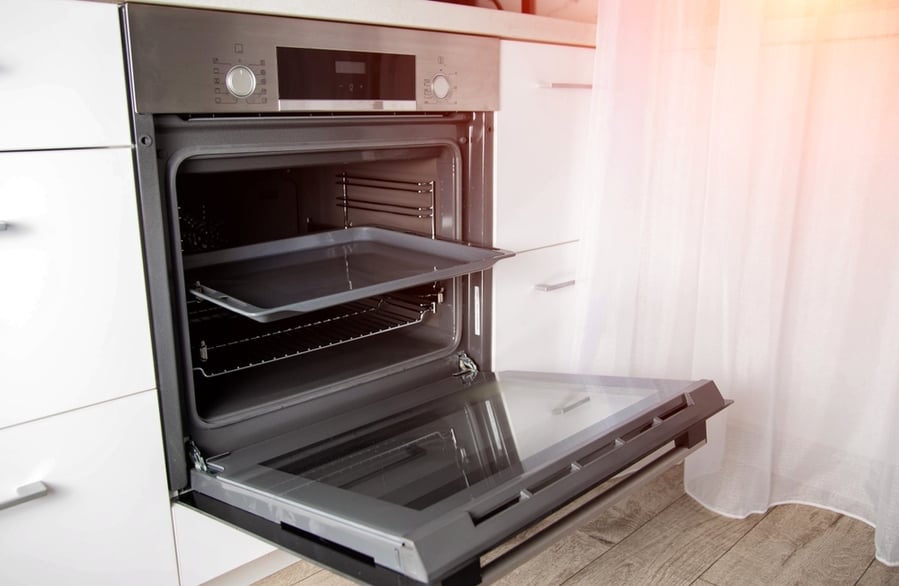
The first and foremost reason to ventilate a built-in electric oven is to protect the electronic components in the back. While the oven works, it will produce heat around the back and sides of the appliance.
When installed properly with ventilation, this air harmlessly escapes. However, if the oven is installed without sufficient ventilation, it can build up and melt wires or fry components.
This is an expensive mistake; it usually ruins the oven beyond repair.
2. Prevent Pressure Build Up
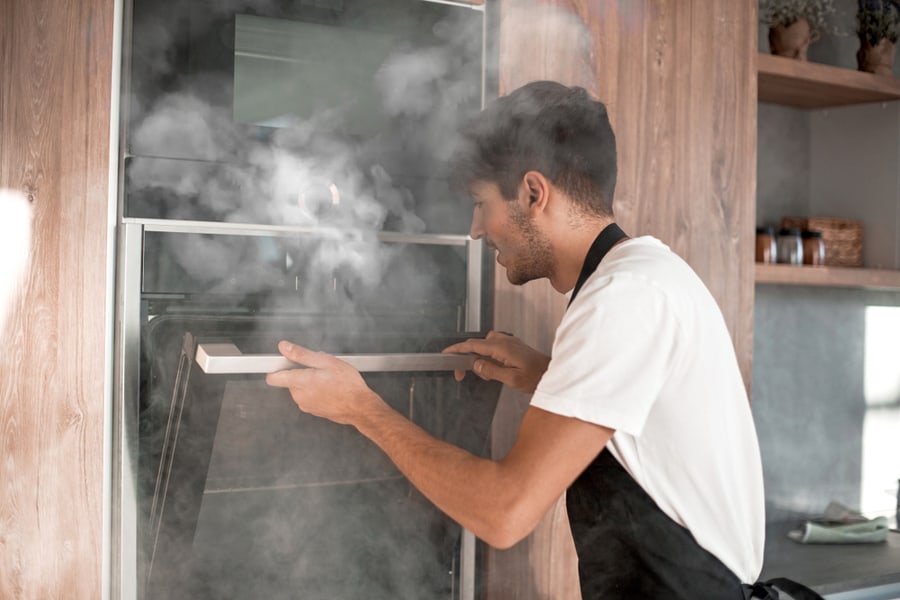
In addition to a build-up of hot air damaging electronics, it can lead to increased pressure around the oven.
As the air becomes hot, it expands and takes up more space. Then, unable to escape from around the oven, the air will try to force its’ way out with pressure.
This can lead to warping or bending parts inside the oven, burst seals, and even an explosion.
3. Prevent Nearby Workspaces From Igniting

Finally, a fire risk exists when you put a heat source flush with another material. Your counters might be fire-resistant, but anything can burn under the right conditions.
Even if the ignition point of the counter is never reached, it can become damaged by heat exposure (discoloration and bubbling and the most common types of heat damage).
How To Ventilate a Built-In Oven
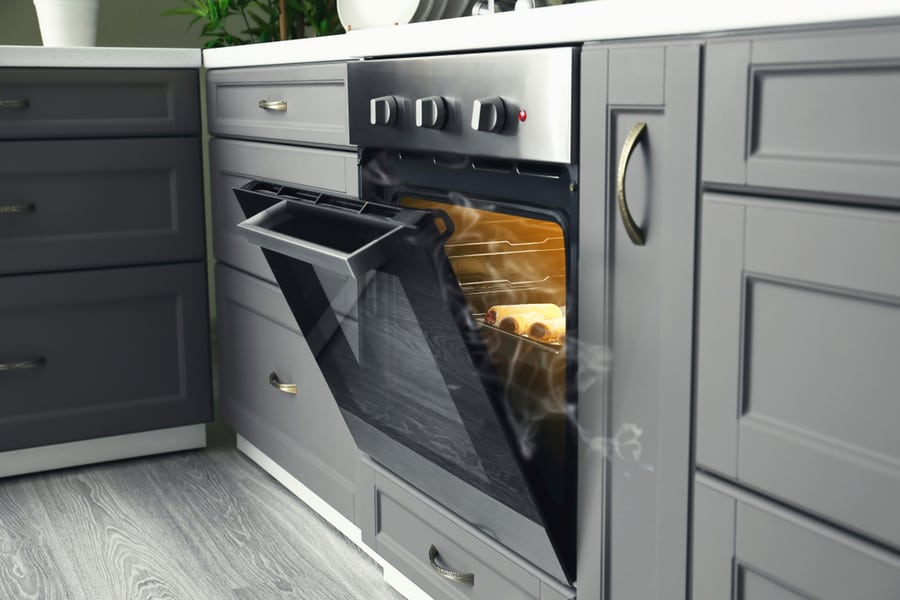
The most important step to ventilating a built-in oven is allowing circulation around the appliance. You can do this by leaving a small amount of space between the oven and the surrounding furniture.
Plan for 6 to 8 millimeters (1/4 to 5/16 of an inch) of space on the oven’s right, left, front, and back.
Most ovens only need space on the sides of the oven, not the top or bottom, although some models require up to 20 mm (3/4 of an inch) of space between the oven and the countertop.
Check with the manufacturer for information about your model.
Using a Kitchen Hood

Using a kitchen hood with your built-in oven isn’t required for safety. That being said, it is sometimes still a good idea.
If you or someone living in your home has sensitive lungs (such as pets, children, or those with asthma), installing a kitchen hood might be beneficial.
Food releases small amounts of air pollution as it cooks, which can irritate those with lung conditions or sensitivities.
Takeaway
Remember to allow air circulation around the appliance when installing your built-in oven. This space will prevent overheating of your electrical components and damage to the oven from pressure and eliminate the risk that your counter or cabinets will ignite.
The space you leave doesn’t need to be large; 6 mm (1/4 of an inch) on the sides is sufficient.
Most built-in ovens don’t require space on the top and bottom of the oven but refer to the manufacturer for the most accurate information.
Likewise, an electric built-in oven doesn’t need to have a vent to the outside of the house like a gas model does, although this might still be helpful in homes where those with lung conditions or sensitive populations reside.
Frequently Asked Questions
What Options Are There for Ventilating My Oven?
The space around the oven is non-negotiable. However, the type of kitchen hood you use is your choice. Popular kitchen hood designs include:
- Island Hoods.
- Under the Cabinet Hoods.
- Microwave/Hood combinations.
- Retractable Downdraft Hoods.


